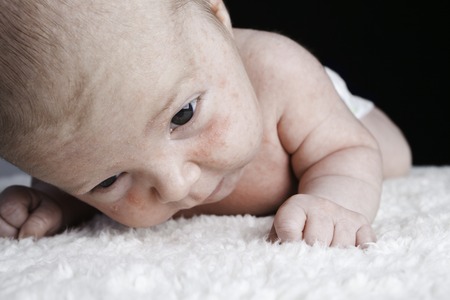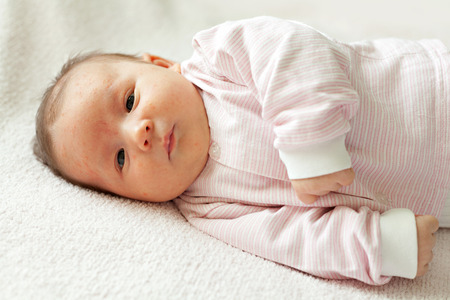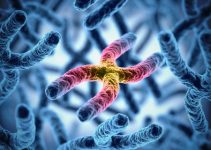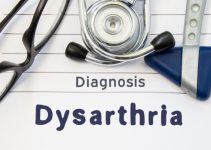What is Milia?
Milia is the plural for milium. These are small white bumps or spots that occur on the skin. They are also commonly termed as milk spots on face. They are almost always seen in clusters and seldom as a single spot. The commonest age group affected by milia are new born babies but they can occur at any age. They are most often seen on the face around the mouth and the nose and rarely on the genitalia. In such cases they need to be differentiated from warts or eruptions of sexually transmitted diseases. Milia occurring in babies are self limiting and they tend to resolve on their own in 2 to 4 weeks. In adults and older children it might take a few months to completely resolve.

Pathology and Causes of Milia
The skin, hair and nails of our body contain a protein called keratin. This keratin is shed of periodically but when it gets trapped beneath the skin cells, then these white bumps are formed on the skin. These bumps are nothing but milia. They are usually multiple in numbers.
The cause of baby milia is unknown. Baby acne on face on the other hand has a known aetiology and is triggered under the effect of maternal hormones. They are also associated with some amount of inflammation and they occur or crop up after birth. Milia has different characteristics from baby acne or rash because milia spots are not associated with any kind of inflammation. Babies who have milia are normally born with it and have it on their skin before they are even born.
Milia occurring in adults and older age children are commonly seen as a result of some kind of skin damage which could be due to the following reasons:
- Burns on the skin
- Blistering due to some chemical injury
- Skin treatments like laser therapy or dermabrasion where the superficial layer of the skin is damaged.
- Exposure to harsh rays of the sun for a long time
- Prolonged use of steroid creams
- Radiation exposure on the skin.
Types Of Milia
Milia are basically small white bumps on face and they are harmless as they do not cause any pain or itching. However the friction of clothes can cause them to get red and irritated. There are few classified types of milia based on the age group they appear in and the exciting cause.
- Baby Milia: These are the commonest forms of milia seen. They are seen in newborns from the time of birth. Studies show that they are found in 40% of new born babies. They are self limiting and tend to go away on their own within few weeks. They do not require any kind of treatment.
- Juvenile Milia: This type of milia is seen in older children and the cause is some genetic disorder. The known causes are Gardner syndrome, nervoid basal cell carcinoma syndrome etc
- Primary Milia: These are white spots that are seen in adults and older children. The commonest locations are the face near the eyes and the genitals. They tend to go away within few months.
- Traumatic Milia: These cysts or bumps occur in the areas where an injury has taken place on the skin especially after burns or abrasions. The bumps get irritated and reddish in color with inflammation and a white center.
- Milia due to drugs: Long continued use of steroids can give rise to milia on the areas where the cream has been applied.
- Milia en plaque: This is a skin condition that is associated with autoimmune disorders like lichen planus. These csyts are larger in size and are seen on the eyelids, ears and jaw region. This condition can affect people of all age groups and both the genders.
Diagnosis Of Milia
The diagnosis of milia is mainly clinical and the typical appearance of the spots helps to reach the diagnosis. The age group at which it occurs also helps to differentiate the type of milia. The presence of supportive history of an injury or burns is also helpful in diagnosing. The most important thing is to be able to differentiate it from other similar looking skin conditions like acne, white heads etc.

Treatment Of Milia
Most cases of milia will resolve spontaneously. Milia occurring in newborns disappears gradually within a few weeks. In adults and older children the milia may take few months to go away. However if the size of the cysts is big and they are infected or associated with pain and discomfort or if they are associated with severe acne then they need to be treated. The common milia treatment dermatologist may use are :
- Using a sterile needle to prick the cysts and deroof the milia bumps is an invasive method of treatment.
- Chemical peels are basically chemical creams that are applied on the skin and then removed. The medications present will help to dry up the milia and other skin eruptions.
- Topical medications containing retinoids or retinol cream for milia ( Retinoids are vitamin A compounds and are very effective in treating skin problems)
- Laser ablation- Destroying the cyst using laser beams is very helpful in facial milia.
- Diathermy- Removal of the milia spots using extreme heat.
- Surgical scrapping and cauterization of the csyts.
- Cryotherapy- This is a method where the cysts are frozen and this helps to destroy the growth and promote the formation of new skin from beneath.
- If the milia is associated with baby acne then acne treatment products can be used. Keeping the face clean and oil and dirt free is the best ways to treat acne.
- Milia can occur after skin damage by harsh sun rays so it is advisable to use a sun block when going out in the sun.
- In any type of milia, it is very important to remember that you should not pick at the bumps in an attempt to remove them. This can lead to permanent scarring and pock marks on the face.



